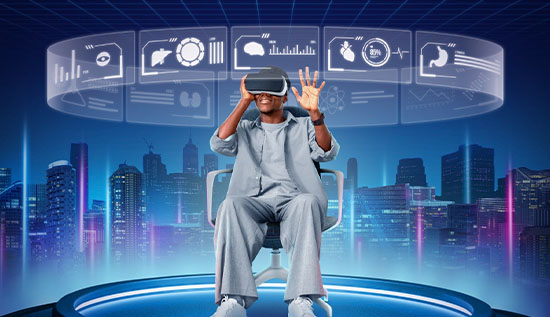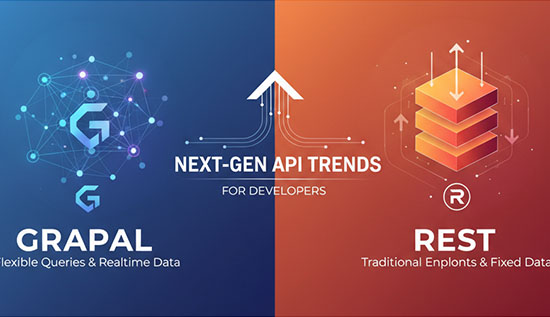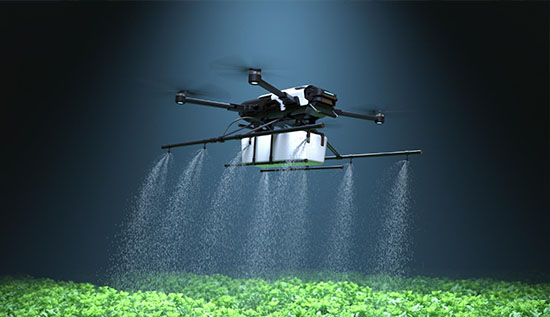Future of Extended Reality in the Workplace: Key Trends & Uses

Discover how extended reality in the workplace is revolutionizing business operations, boosting productivity, and enhancing remote collaboration.
Extended reality (XR) is transforming company environments and influencing employee interaction, teamwork and task performance. Companies are using extended reality in the workplace as it develops to improve output and simplify process. From xr for remote work collaboration to immersive training experiences, businesses are exploring its potential to improve workflows and customer engagement.

How XR Is Changing the Workplace
Technological developments have revolutionized company operations; extended reality in the workplace is therefore rather important in these developments.
XR technologies are being used by businesses to provide virtual collaboration, hands-on training and real-time problem-solving. One of the key ways how XR is changing the workplace is through immersive employee training. XR is used in sector including manufacturing and healthcare to create simulated setting where staff members may rehearse difficult surgeries free from actual risk. This improves experience of learning and lowers mistake.
Moreover, xr technology in business operations is making workflows more efficient. Architect and engineers. for example, use augmented reality (AR) to see project designs before they are started. This strategy maximizes planning and reduces design defects.
How Companies Are Implementing Extended Reality
XR is used by businesses in virtual meetings, staff training, product design, remote teamwork, and consumer experiences. Companies like Meta and Microsoft provide XR tools to improve immersion digital environments' engagement, productivity and team building.
Benefits of Extended Reality for Businesses
The benefits of extended reality for businesses extend beyond improved training. XR enhances productivity, minimizes costs, and strengthens customer engagement.
- Increased Productivity: Virtual collaboration tools allow remote employees to work seamlessly, reducing travel time and improving workflow efficiency.
- Cost Savings: XR eliminates the need for physical prototypes and reduces training expenses, leading to significant cost reductions.
- Enhanced Customer Experience: Retailers use xr for enhanced customer experience by offering virtual showrooms where clients can interact with products before purchasing.
Read more: The Remarkable Advantage of Technology
XR for Remote Work Collaboration
Rising remote work is XR (Extended Reality) transforming team connectivity and collaboration. Companies use XR technologies to build immersive environment that boost involvement and output.
Key Benefit:
- Virtual Meeting Spaces: Employees interact as if they are in the same room.
- AR-Based Project Management: Teams visualize projects in 3D for better planning.
- Enhanced Engagement: Immersive environments improve focus and teamwork.
- Innovative Platforms: Companies like Meta and Microsoft are developing XR-powered tools for meetings and brainstorming.
Incorporating XR for remote work collaboration can help companies promote flawless teamwork, hence improving the efficiency and interactivity of remote work.
How Businesses Use Extended Reality
Many industries are integrating extended reality in the workplace to enhance operational efficiency. Understanding how businesses use extended reality can provide insight into its real-world applications:
- Healthcare: Reducing the margin of error, surgeon employ VR simulations to rehearse difficult operations before doing actual ones.
- Retail: Companies design online stores where consumers may see goods in three dimensions before they buy.
- Manufacturing: AR overlays provide real-time direction to help employees assemble difficult gear.
- Education: XR is used by schools to develop interactive learning environment. therefore enhancing student understanding and involvement.
XR Applications in Modern Workplaces
The growing adoption of xr applications in modern workplaces highlights its versatility across various industries. From training simulations to real-time remote assistance, XR is reshaping traditional business operations.
One of the most notable applications is xr technology in business operations, where companies use augmented and virtual reality for data visualization, product design, and workforce collaboration. Combining XR with artificial intelligence (AI) helps companies to construct prediction models that simplify decision-making procedures.
Impact of Extended Reality on Productivity
The impact of extended reality on productivity is evident in the way it simplifies complex tasks and enhances communication. Employee working in industries such as logistics and construction rely on XR tools to access crucial information instantly, reducing error and downtime.
XR-powered data visualization tools also let executives more precisely examine performance measures and trend. Data-driven decisions resulting from this help to increase productivity and propel corporate expansion.
Future of Extended Reality in the Workplace
The future of extended reality in the workplace is promising, with continued advancements expected to bring even more transformative changes. Businesses are increasingly investing in XR solutions to stay competitive in an evolving digital landscape.
Companies will experience better accessibility and affordability of XR tools as technology develops, hence they will be essential for daily operations. XR combined with artificial intelligence and the metaverse will improve company operations even more and create immersive settings that inspire creativity and teamwork.
Conclusion
Extended reality is becoming an essential tool for businesses, transforming employee training, customer engagement, and workplace collaboration. The impact of extended reality on productivity is undeniable, with many companies leveraging XR to streamline operations and enhance efficiency.
As the future of extended reality in the workplace continues to unfold, businesses that adopt these technologies early will gain a significant competitive edge.
Frequently Asked Questions
1. In what ways may extended reality find application in corporate operations?
Across several sectors, extended reality is applied for training, remote collaboration, product visualization and consumer involvement.
2. In what ways may extended reality help companies most?
Among the main advantage are better customer experience, cost savings, increased productivity and effective remote cooperation.
3. In what ways might XR affect remote work teamwork?
To help distant collaboration, XR offer virtual meeting venues, interactive project management solutions and immersive training course.
4. XR applications help which businesses most?
XR solutions help greatly the sectors of healthcare, retail, manufacturing, education and real estate.
5. In what ways may extended reality improve consumer experiences?
XR is used by companies to produce customer virtual showrooms, interactive product presentations, and immersive brand experiences.
6. Where will extended reality find use in the workplace going forward?
Wider acceptance of XR tools, AI integration and development in immersive workplace collaboration technologies define the future.
7. How can XR provide difficulties for companies trying to apply?
High initial expenses, technical integration, and personnel training requirements to exploit XR advantages present challenge.
Read More: Why it is Most Important to Keep Workplace Security on Priority?
More Articles
 24 Nov 2025
24 Nov 2025
Increase User Engagement with Cross-Platform Strategies
Learn cross-platform engagement strategies to strengthen consistency and boost user interaction across all digital channels.
 20 Nov 2025
20 Nov 2025
GraphQL vs REST: Next-Gen API Trends for Developers
Compare GraphQL vs REST to optimize API performance, scalability and modern application design with best practices for developers.
 20 Nov 2025
20 Nov 2025
Neural Network Programming Beyond Python: Rust & C++
Experience neural network programming beyond Python, powered by Rust and C++ ecosystems built for speed, safety, and large-scale deployment.
 19 Nov 2025
19 Nov 2025
Swarm Robotics in Agriculture & Logistics: Smart Automation
Swarm Robotics in Agriculture & Logistics enhances automation, efficiency, and smart coordination across modern farming and logistics operations.